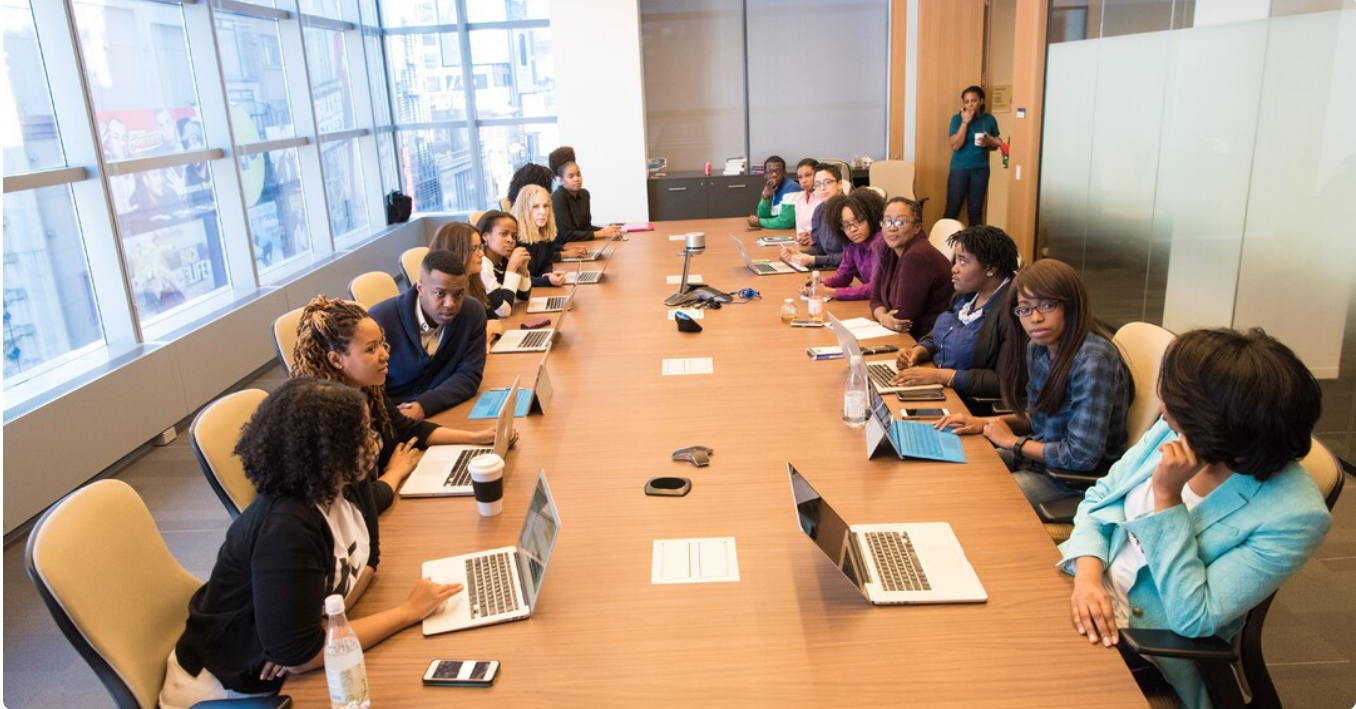Discover how to future proof your Intelligent Automation Centre of Expertise | 32 Experts Guide to Happy Ever After – Final Part 5
Part 1 of our expert series looked ‘What does a Centre of Excellence do?’ Part 2 looked at the pros and cons of alternate CoE models. Part 3 asked and answered ‘What business conditions must exist for a CoE to be successful?‘ Part 4 asked ‘Who works in a COE and what are their responsibilities?’. Today’s final article in the series looks at a RACI. Let’s begin.
Although overlooked and underestimated, CoEs are a critical part of building a robust IA | RPA program. An IA | RPA CoE has a wide range of benefits that can vastly improve business capabilities but creating an automation CoE that matches an organisations business goals entirely is no easy task. A well-formed IA | RPA Centre of Excellence can help organizations manage the full cycle of IA | RPA, right from developing business use cases to supporting a vast bot ecosystem. But to let this happen everyone needs to be clear what in their roles and accountabilities. A RACI helps make that happen.
Responsible, accountable, consulted, and informed (RACI).
While the CoE is central to an industrialized robotics capability, other areas of the business are key to a successful robotics program. Boundaries must be established to avoid teams tripping over each other. One method organisation often employ is to outline roles and responsibilities in a RACI matrix. A RACI matrix is a responsibility assignment chart that maps out every task, milestone or key decision involved in completing an automation project and assigns which roles are Responsible for each action item, which personnel are Accountable, and, where appropriate, who needs to be Consulted or Informed.
“A governance framework helps an organization define strategic direction and performance metrics for a business. Business transformation is an ongoing process. Therefore, it is important that a governance model, supported by tools such as RACI, is kept up to date. I will not be revealing a secret if I say that the secret sauce to make any project or operational work ‘tastily’ is effective communication. 80% of projects fail due to insufficient communication between stakeholders, both inside and outside of the organization. A RACI tool will not solve all possible challenges on a project or in a company, but it will allow you to effectively manage project/program expectations among all stakeholders. In this process, the IA CoE leaders occupy a key place and are the driver of the process. And here the skill of selling their ideas to stakeholders is especially important, because IA CoE leaders often enter the territory of other teams or specialists and it is important to effectively present their thoughts and ideas.”
Iurii Shubin, Head of Intelligent Automation
IA | RPA CoE
- Identify and prioritise new opportunities for automation
- Agile teams that can be set up quickly to deliver robotics to operations within agreed budgets
- Act as a single point of contact. All requests for robotics go through the same team that has a proven delivery methodology
- RPA Vendor management
- Solution development
- Coordinate the efforts of citizen developers.
- Stakeholder engagement
- Automation documentation, code library and object reuse.
- Automation project delivery enablement
- Create best practices
- Creation of policies, standards, processes and template materials relating to robotics within the business
“Best practices and standards will keep your team from reinventing the wheel and help create consistencies in the way the RPA team implements automated systems.”
William Roseberry, CEO
Operations
- Target ownership set through a budgetary process
- Staffing to assist the RPA CoE in the assessments, design and testing of the automated processes
- Re-organization change management or communications required for the realization of robotics benefits
- Disaster Recovery and Continuity planning
Information Technology (IT)
- Delivery and maintenance of the required robotics infrastructure i.e. applications hosting
- Security of IT systems, data and robots
- Investigation and resolution of incidents on IT Infrastructure, and system access when it is identified as an issue
- Application governance
- Auditability of the processes
Business Owners
- Business vision
- Organisation strategy
- Approval for the business case and program funding
- Executive Sponsorship
“A CoE with a clear vision and mandate are essential for automation to be delivered at scale and successfully across an enterprise”
Faisal Iftikhar, VP and Global Head of Automation
HR
- Engagement model with virtual workforce
- Skills development
- HR strategy in regard to future of work roles, recruitment and planning for same
Procurement
- Engaging with suppliers to deliver the best value possible for the requirements supplied by the operational leads, CoE and IT. These mainly include robotics licenses, robotics infrastructure (Virtual Desktop Infrastructure and servers), and robotics implementation costs (when provided by a third party) and other software needed by the CoE.
“Make sure you align the license period with existing contracts so you’re able to renew licenses at the same time, instead of having different expiring contracts. Even when starting small with a few licenses, remember to calculate the upfront costs of additional licenses, and educate yourself on other additional costs too (e.g. for servers to scale the automation project). The IT costs can be optimised when looking at the current and the future IT landscape. Also, include the additional (cloud) capacity in existing IT contracts.”
Nirmala Chaturi, Senior Manager | Digital Process Excellence
Finance
- A program that does not deliver benefits is a failed program. Getting and keeping the support of a CFO is key to the success of an automation program. A solid business case, that stands up to financial rigor, is a key component of any automation program. In addition, tracking and banking business benefits on a quarterly basis is required to keep an automation program on track.
- If your RPA program is not making money then it has failed.
“If savings are not being achieved in terms of monetary measurements, efficiencies, or a better customer experience, then what is the benefit of automation?”
Dermot Carroll – Technical Lead, Virtual-Operations

Figure 1: Automation RACI Matrix (ISG)
“There are two areas within the CoE where the RACI matrix is an extremely useful and often essential tool. Firstly, for the Project Manager, who needs to understand the nuances of automation projects and can quickly apply RACI roles effectively and proportionately to the various teams and members. Secondly for the Business Analysts who use a RACI matrix to capture the stakeholders of tasks and processes, to ensure the smooth transition through optimisation, development and deployment into production.”
Mark Barrett, Business Founder and Lead Automation Consultant.
Automation is not an overnight success story. Whilst significant returns can be achieved within 12 months, automation and digital transformation is a long-term play. It is crucial to have the big picture in mind, but take small steps to begin (i.e. start small, think big, scale fast). Automation skills are built over time.
COEs are designed to drive innovation and improvement. They also create a structure that encourages the different members of the organisation to measure, experiment, and push it forward. By promoting more transparency and more shared results, CoEs can be a powerful way for an organization to align around business goals, rather than individual departmental metrics.
With the right automation IA | RPA CoE tools, team and methods, a business can open itself up to new opportunities to interact with customers, close more deals and make more money using automation and digital technology. If that isn’t something worth aiming for then nothing is.
“THE END.”
If you like this article then you may find these articles of use too.
- How to build a business case for Intelligent Automation and Robotic Process Automation
- If your RPA program is not making money then it has failed.
- i’ve-now-met-150-rpa-developers-20-signs-truly exceptional developer (Author)
- 30 ways to build a pipeline of processes suitable for Robotic Process Automation (RPA) and Intelligent Automation (IA)
- 8 questions to ask to ensure you select the ‘right’ processes to automate using RPA | IA.
- 14 rules for Robotic Process Automation (RPA) and Intelligent Automation (AI) success
- The A-Z of Robotic Process Automation, Intelligent Automation and Digital Transformation
- The biggest lie told to RPA customers – 50 robots equals success
- 40 essential selection criteria to choose an RPA platform
If this could benefit someone else tag them and share this.
Free to reuse: We are a community of RPA and Intelligent Automation experts with years of real world experience. We have stories to tell and the scars to show for it. We share our collective wisdom for free to simply provide as much value as we can to you. Therefore, if you want to post this article on your LinkedIn page then please feel free to do so. The more information we share within the RPA | IA community the more likely businesses are to succeed with this excellent technology.
Further Help: If I can help you in any way please do reach out.
Note: The views expressed above are our views and not those of my employer or the employers of the contributing experts.









Leave a Reply